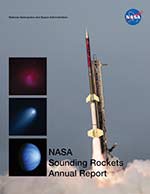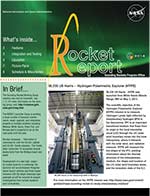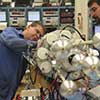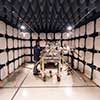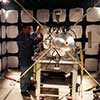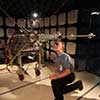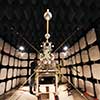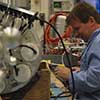
52.005 UE LABELLE/DARTMOUTH COLLEGE
Cusp Alfven and Plasma Electrodynamics Rocket (CAPER) 2
- Mission
- Vehicle
- Launch
- Photos
 The CAPER-2
mission investigated the complex interactions between planetary magnetospheres and their underlying ionospheres. These interactions are most easily studied at high magnetic latitudes of the Earth, where magnetosphere-ionosphere (MI) coupling gives rise to the aurora via at least two separate electron acceleration processes of broad significance to space plasma physics: acceleration in electrostatic electric fields and in time-varying electromagnetic fields
associated with Alfvén waves.
The CAPER mission will make significant advances in understanding of dayside MI coupling by building on the small number of previous rocket experiments in
the cusp.
The CAPER-2
mission investigated the complex interactions between planetary magnetospheres and their underlying ionospheres. These interactions are most easily studied at high magnetic latitudes of the Earth, where magnetosphere-ionosphere (MI) coupling gives rise to the aurora via at least two separate electron acceleration processes of broad significance to space plasma physics: acceleration in electrostatic electric fields and in time-varying electromagnetic fields
associated with Alfvén waves.
The CAPER mission will make significant advances in understanding of dayside MI coupling by building on the small number of previous rocket experiments in
the cusp.
The dayside high-latitude polar cusp is a unique environment where direct access of solar wind particles to low altitudes leads to similar particle precipitation and acceleration processes as on the nightside, but dominated by a rather different set of magnetospheric processes, such as dayside reconnection and interactions with interplanetary pressure pulses and discontinuities. In particular, direct measurements of Alfvén waves associated with electron acceleration, via their electric and magnetic fields, has not been reported in the cusp (as opposed to the nightside), and the detailed interaction of the electron beam with Langmuir wave electric fields, as well as statistics of the resulting complex structure in the fields, has not been directly measured in the cusp (as opposed to the nightside).
By including the same key instruments flown on complementary missions in the nightside aurora, CAPER will establish the role and nature of Alfvén wave acceleration in the cusp and discover the causes of the observed differences in the Langmuir waves in the cusp versus the nightside. CAPER-2 also included the first ever wave-particle correlator measurements in the cusp. The results affect a range of NASA programs in geospace, planetary, heliospheric and astrophysical sciences and are pertinent to multiple objectives of NASA’s Heliophysics research program.
To achieve the science a single instrumented payload was launched to 800 km or higher into cusp aurora from the Andoya Rocket Range, located in Norway. Apogee of 800 km is required to assure significant flight time in the altitude range where auroral Langmuir waves are excited and to have the best chance to penetrate the ionospheric Alfvén resonator, a region where Alfvén waves are trapped along the magnetic field and can lead to structured aurora via wave-particle interactions.
The Principal Investigator is Dr. Labelle/Dartmouth College.
The Black Brant XII-A is a four stage sounding rocket with a Talos first stage, Terrier second stage, Black Brant third stage and a Nihka fourth stage. The Black Brant XII-A can reach altitudes of about 1400 km. Payloads weighing from 300 to 1000 pounds can be flown. Additional sounding rocket vehicles
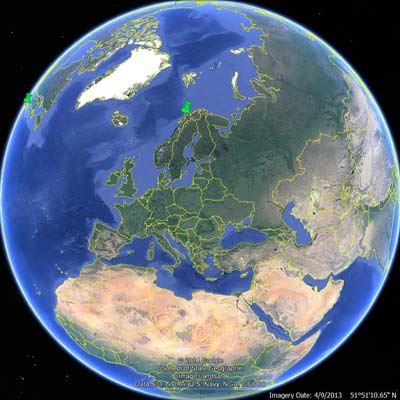
The CAPER-2 mission was launched from Andoya Space Center located in Norway on January 4, 2019.

